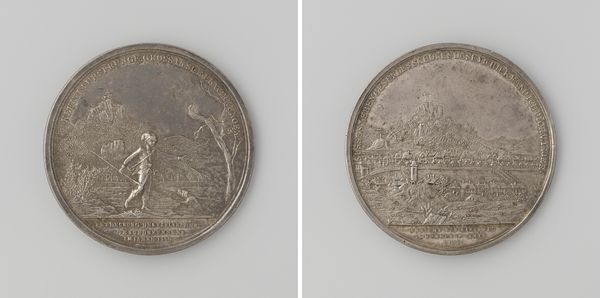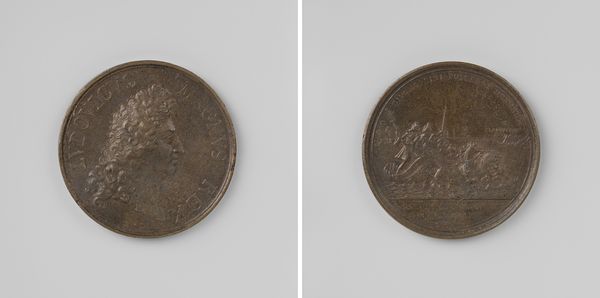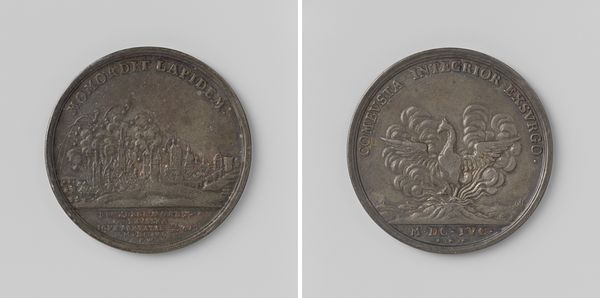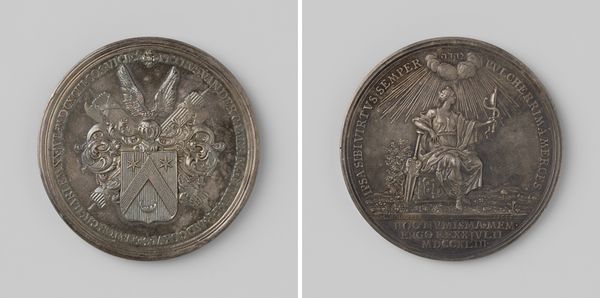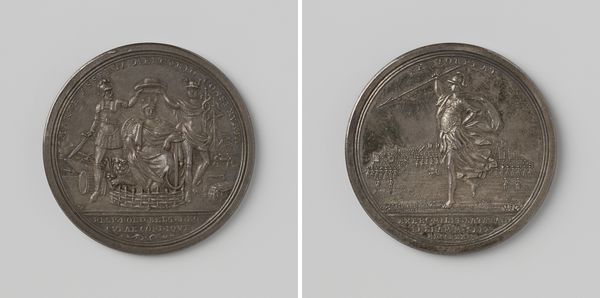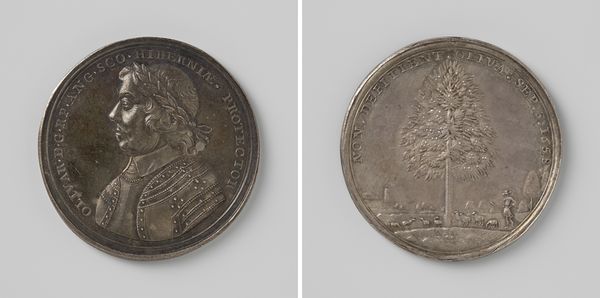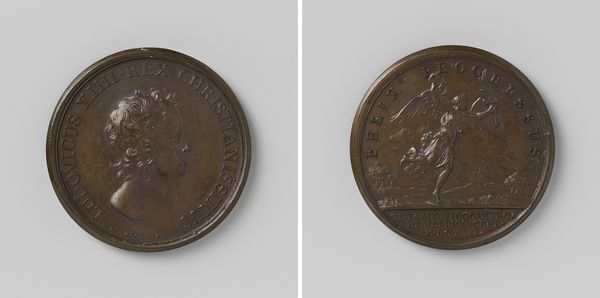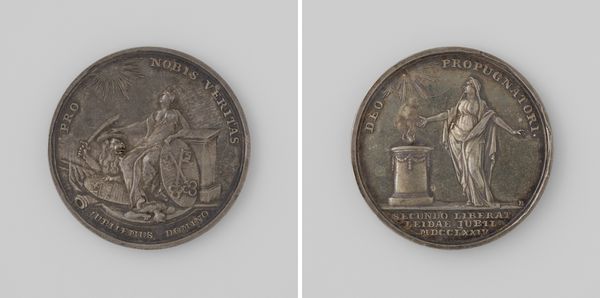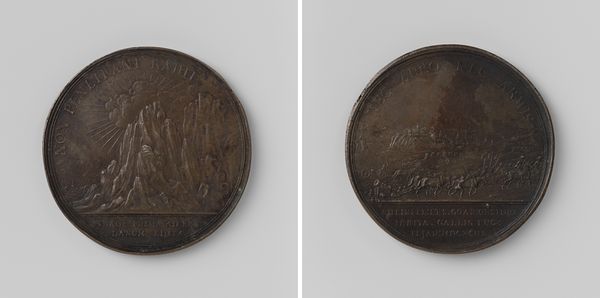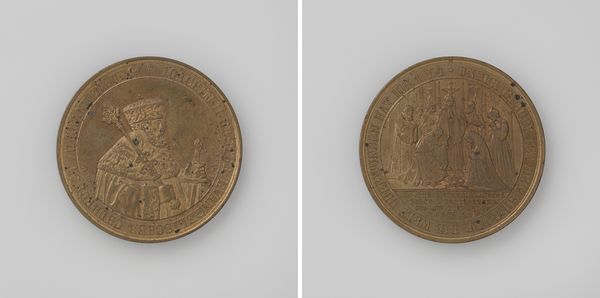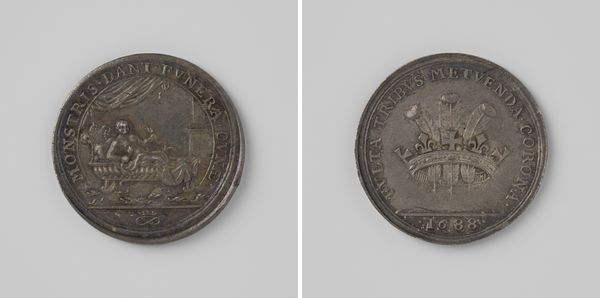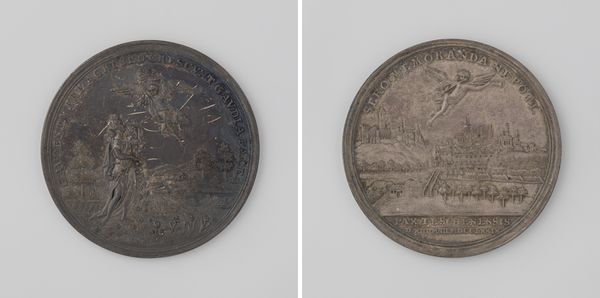
print, metal, relief
#
baroque
# print
#
metal
#
relief
#
history-painting
Dimensions: diameter 4.7 cm, weight 47.16 gr
Copyright: Rijks Museum: Open Domain
Curator: Let's take a look at this metal relief from 1708, depicting the "Battle of Oudenarde and the Capture of Rijssel." Editor: My first impression is somber; despite depicting a military victory, the monochrome and the way it's impressed into the material conveys something heavier, less celebratory than one might expect. Curator: Absolutely. These kinds of commemorative medals were often commissioned by ruling powers, in this case perhaps connected to the Dutch Republic or its allies, to legitimize their authority and broadcast their victories to both domestic and international audiences. The Baroque style, though scaled down for this form, reinforces that grandeur. Editor: Exactly. It makes me consider the craft of medal-making. Working in metal relief involves a skillful manipulation of materials, pressing and shaping to capture detailed scenes. It must have been relatively reproducible, and meant for wider circulation than a painting, say. Curator: The inscription is critical too, although I cannot read it offhand; inscriptions work as embedded captions. This connects the visual representation with specific political narratives and meanings, shaping the historical interpretation for viewers. Editor: Looking closer at the figures, it is not the heroism but the labor behind this military campaign that catches my attention. Think of the mining and refining to produce this medal's raw material, and then the very hand skills needed for the relief. Those processes echo the scale of war making too, wouldn't you say? Curator: It’s undeniable. But how are these medals perceived by the common person, or, say, an enemy combatant? They operate within a sphere of political exchange, acting almost as currency to sway public sentiment. Editor: I wonder how many of these ended up melted down later for other purposes. There's a story of material reuse buried within each piece. What seems like a singular triumphant moment can, materially, just be another step in a longer cycle. Curator: That is very well put; thinking about the artwork from that viewpoint definitely provides more texture and depth to the history behind this piece. Editor: Indeed, it seems we both appreciate that sometimes the most glorious image can carry heavy stories, shaped by both hands and history.
Comments
No comments
Be the first to comment and join the conversation on the ultimate creative platform.
